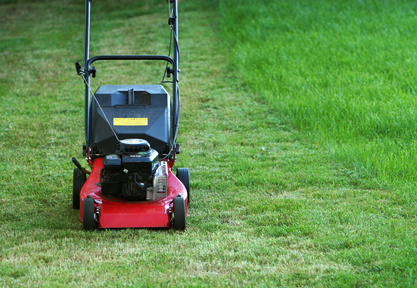
Governors find applications on many small engines, including weed eaters, snow blowers, chain saws and all lawn mower engines. Their importance cannot be ignored, since they serve a very important part of the engine's rpm control system. By either using a vane-type or mechanical governor, they keep the engine from from "over-reving,"or rotating faster than the manufacturer's specifications. Improperly adjusted or defective governors can literally allow the engine to fly apart from uncontrolled speed. The governor spring, a pressure-sensitive spring, keeps tension on the throttle linkage to maintain a safe rpm for the engine. To replace or repair the spring requires a delicate touch and a few simple steps.
Locate your engine in a convenient place where you can work over the top of it. Refer to you small engine repair manual for the proper procedure to access the governor. Lawn mower engine have vertical and horizontal crankshafts, with upright and horizontal cowl casings. Use a socket and wrench to remove the three or four bolts that hold the cowl casing to the engine block. Lift the case off and look at the governor configuration. It will be either a vane-type or mechanical gear type.
Clean and remove any grass wound around the bottom of the flywheel, as well as leaves, sticks and debris in the flywheel vanes -- nothing should impede the airflow against the governor vane. Look at the spring connected to the vane linkage arm and the slide mechanism on the carburetor linkage arm. Note which adjustment hole the spring occupies on the linkage. Use a pair of needle-nose pliers to twist the spring and remove it from the vane linkage arm. Pull the spring up and rotate it off the slide mechanism.
Use your fingers to rotate the new spring, threading it through the slide mechanism hole. Attach it to the same adjustment hole you removed it from. Use needle-nose pliers to connect the other end of the spring to the governor lever arm. Do not stretch the spring -- swivel the linkage to shorten the distance. Move the lever arm back and forth against the spring pressure and note the carburetor throttle operation. It should open and close.
Rotate the spring and pull it off the mechanical governor lever, if you have this configuration. Notice the other end where the spring connects to the carburetor throttle arm, which has several adjustment holes. Remember the correct adjustment hole. Twist the spring in a circular motion until it comes off of the throttle arm.
Place the new spring in the hole on the mechanical governor lever. Use needle-nose pliers to connect the other end of the spring through the hole in the carburetor throttle lever. Work the governor lever back and forth, noting the opening and closing of the carburetor throttle.
Place the engine cowl back onto the engine block, aligning the mount holes. Start the bolts by hand. Finish tightening them with a socket and wrench. Start the engine and note the throttle response from idle to wide-open throttle.